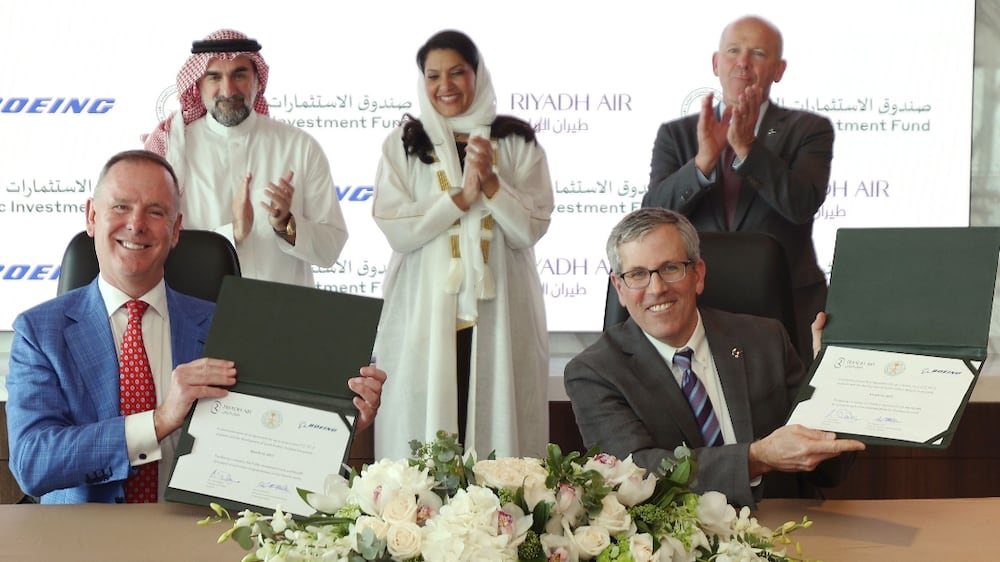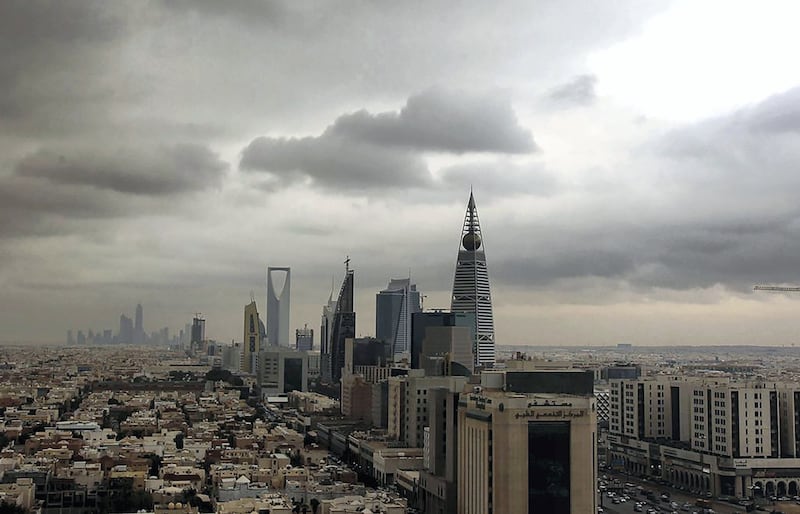S&P Global Ratings has revised Saudi Arabia’s rating to “A/A-1” from “A-/A-2” and assigned it a stable outlook as the Arab world’s largest economy continues to proceed with significant reforms to diversify its non-oil economy.
The A/A-1 rating indicates a strong capacity by the obligator to meet financial commitments.
“The upgrade is underpinned by Saudi Arabia’s sustained reform momentum in recent years, alongside its leadership role in global oil markets,” it said.
“Reforms include measures to drive non-oil economic growth, supported by sovereign wealth fund-led non-oil investments, and to widen the non-oil tax base, alongside significant social liberalisation, which should strengthen consumer demand.
“These factors combined support domestic demand, gross domestic product growth, employment and fiscal and external net-asset positions.”
Saudi Arabia, the Arab's world's largest economy, is in the middle of a major economic diversification drive under its Vision 2030 agenda, amid a push to reduce its reliance on oil and tap into other high-growth industries to boost its economy, create more jobs and attract private investment.
The kingdom recorded the highest annual growth rate among the world’s 20 biggest economies in 2022, according to the latest data from the Organisation for Economic Co-operation and Development.
Its economy expanded 8.7 per cent last year on higher oil prices and the strong performance of its non-oil private sector.
Business activity in the non-oil economy of Saudi Arabia hit an eight-year high in February as output growth in the kingdom strengthened, according to the Riyad Bank purchasing managers’ index.
Saudi Arabia’s significant reform momentum in recent years has begun to deliver structural improvements to its economy and fiscal and debt management, according to S&P.
“We believe the economy will continue to benefit from Saudi Arabia’s leading role as the largest individual oil exporter globally,” the agency said.
“The stable outlook balances our expectation that the government’s reform plans will support the development of the non-oil sector against the cyclicality of a still-hydrocarbon-focused economy, with fiscal and societal pressures tied to rapid population growth.”
The agency also revised upwards the kingdom’s transfer and convertibility assessment to “A+” from “A”. This reflects S&P’s view of the likelihood of a sovereign restricting non-sovereign access to foreign exchange needed to satisfy the latter’s debt service obligations.
“After very strong real GDP growth of 8.7 per cent in 2022, we expect Saudi Arabia’s economic growth will moderate but remain resilient, averaging 2.6 per cent in 2023-2026,” the agency said.
“Alongside strong oil-sector growth in 2022, the non-oil sector also expanded robustly in 2021 and 2022, and we forecast it will remain reasonably strong through 2026, thanks to services sector growth.”
The government’s fiscal surpluses will continue through to 2024 before the balance returns to small deficits in 2025 and 2026, according to S&P’s estimates.
The central government’s budget surplus reached 2.5 per cent of GDP in 2022.
Saudi Arabia's Riyadh Air plans new orders ahead of 2025 take-off

“Given reasonably strong oil prices, we forecast further, albeit smaller, central government surpluses of 0.4 per cent of GDP in both 2023 and 2024, before a sharper fall in prices leads to a return to central government deficits averaging 1.5 per cent of GDP in 2025 and 2026,” the agency said.
Meanwhile, a sharp recovery in global oil demand, alongside the Opec+ easing of supply restrictions in the latter half of 2021 and further in 2022, led to sharp improvement in Saudi Arabia’s external position in 2022, with an estimated current account surplus of 12.2 per cent of GDP, S&P said.
It also expects the country’s current account surpluses to average 2.9 per cent of GDP between 2023 and 2026.
The kingdom will maintain a relatively strong overall net asset position on both its fiscal and external balances owing to its current fiscal surpluses, funds accumulated in past surplus years and reinvestments, S&P estimates.







